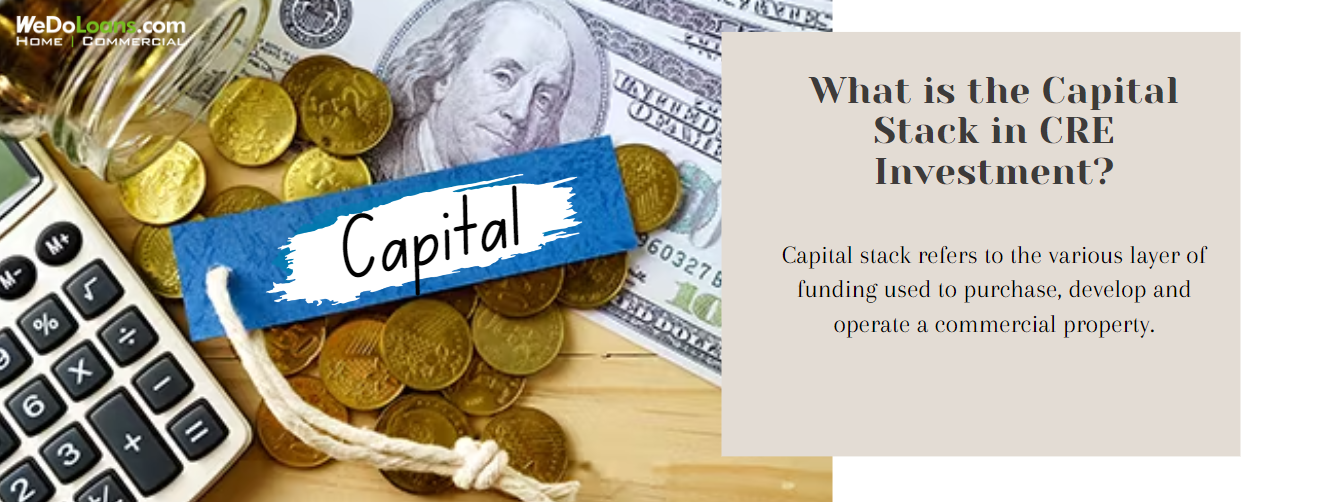
Investing in commercial real estate often requires significant capital, which is typically sourced from various channels. The capital stack refers to the different layers of financing utilized to acquire, develop, and manage a commercial property. It is essential for investors, particularly those purchasing property, to comprehend the intricacies of a property’s capital stack.
Defining the Capital Stack in Real Estate
The capital stack in real estate describes the hierarchical structure of capital invested in a real estate project. This includes a range of funding sources, from debt financing to equity investments, each with its own risk profile and return expectations.
Importance of the Capital Stack in Commercial Real Estate
The capital stack is vital in commercial real estate as it dictates the priority of financial obligations and the associated risk for each layer. Investors and lenders must understand a property’s capital stack to accurately assess the risk and potential return of their investments.
Components of the Real Estate Capital Stack
Commercial real estate capital stacks are often more complex than those for single-family homes. Here are the common components:
- Senior Debt: The most secure layer, typically provided by banks or institutional lenders, with the highest claim priority but lower interest rates.
- Mezzanine Debt: Positioned below senior debt, offering higher interest rates and sometimes equity participation.
- Preferred Equity: Entitled to fixed dividends after debt obligations are met, with priority over common equity but less upside potential.
- Common Equity: The most junior layer, bearing the highest risk but also the highest potential returns if the project succeeds.
Example of a Commercial Capital Stack
Consider a building requiring $100 million for purchase and renovations. The funding might be structured as follows:
- Senior Debt: $64 million (80% of the purchase cost)
- Specialized Loan: $5 million (for energy-efficient upgrades)
- Mezzanine Debt: $15 million (15% of total funding)
- Preferred Equity: $10 million (10% of total funding)
- Common Equity: $6 million (6% of total funding)
Payments are made in this order, with senior debt being prioritized and common equity being the last to receive returns.
Benefits of a Capital Stack in Commercial Real Estate
A diverse capital stack can offer several advantages:
- Reduced Risk: Diversifies funding sources, reducing dependency on any single lender or investor.
- Increased Liquidity: Attracting more investors can facilitate easier exits.
- Financial Flexibility: Tailored capital stack structures can better meet specific project and market needs.
- Maximized Returns: Leveraging multiple financing sources can enhance potential returns, though it also increases risk.
Risks Associated with the Capital Stack in Commercial Real Estate
Despite its benefits, there are risks:
- Increased Complexity: Managing a capital stack can be challenging, particularly for inexperienced investors.
- Potential for Conflict: Different stakeholders may have conflicting interests, leading to disputes.
- Risk of Default: Insufficient project income can lead to loan defaults, resulting in unpaid or reduced investor returns.
Impact of the Capital Stack on ROI in Commercial Real Estate
The capital stack significantly influences the potential return on investment (ROI) for a commercial real estate project. The position of an investment within the stack affects both its return potential and the likelihood of receiving that return. Overall project returns are influenced by how capital is sourced and allocated, affecting interest rates, dividends, and profitability.
Considerations Before Investing in a Capital Stack
When evaluating a commercial real estate project, consider these factors:
- Investment Goals: Align your risk tolerance, desired returns, and timeframe with the investment’s position in the stack.
- Sponsor Experience: Assess the expertise of the project sponsor, as their track record significantly impacts the project’s success.
- Property and Market: Understand the property and the current market conditions, as these are crucial to the investment’s viability.
Conclusion
A thorough understanding of the capital stack is crucial for anyone investing in commercial real estate. By comprehending the various components and their implications on risk and return, investors can make informed decisions about which projects to pursue and how to structure their investments.
